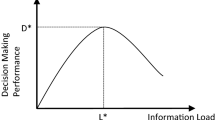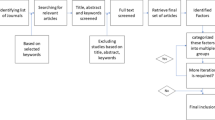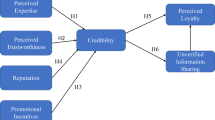Abstract
Corporate responsibility (CR) communication has risen dramatically in recent years, following increased demands for transparency. One tendency noted in the literature is that CR communication is organised and structured. Corporations tend to professionalise CR communication in the sense that they provide information that corresponds to demands for transparency that are voiced by certain stakeholders. This also means that experts within the firm tend to communicate with professional stakeholders outside the firm. In this article, a particular aspect of the organisation of CR communication is examined, a phenomenon that we refer to as the ‘filtration effect’. By comparing CR communication in parent companies and their subsidiaries, we show empirically that there is considerably less CR communication on the subsidiary level compared to the parent level. We see filtration as a sign of conscious organising of CR communication that implies particular attention to certain stakeholder groups with clearly defined demands and expectations on companies. The strong filtration effect noted in the study suggests that CR communication does not seem to be very much adapted to customers, which may be problematic both from a communicative and ethical perspective. The study covers Sweden’s 206 largest retail firms.
Similar content being viewed by others
References
Basil, D.Z. and J. Erlandson: 2008, ‘Corporate Social Responsibility website representations: A longitudinal study of internal and external self-presentations’, Journal of Marketing Communications 14(2), 125-137.
Birth, G., L. Illia, F. Lurati and A. Zamparini: 2008, ‘Communicating CSR: practices among Switzerland’s top 300 companies’, Corporate Communications: An International Journal 13(2), 182-196.
Bondy, K., D. Matten and J. Moon: 2004, ‘The Adoption of Voluntary Codes of Conduct in MNCs: A Three-Country Comparative Study’, Business and Society Review 109(4), 449-477.
Borglund, T., H. De Geer, and M. Hallvarsson: 2008, Värdeskapande CSR: Hur företag tar socialt ansvar (Norstedts, Stockholm).
Capriotti, P. and A. Moreno: 2007, ‘Communicating corporate responsibility through corporate web sites in Spain’, Corporate Communications: An International Journal 12(3), 221-237.
Thøger Christensen, L. and R. Langer: 2009, ‘PR and the Strategic Use of Transparency: Consistency, Hypocrisy and Corporate Change’, In: R. L Heath, E. L. Toth, D. Waymer (eds.), Rhetorical & Critical Approaches to Public Relations. Routledge, London, 129-153.
Coupland, C.: 2005, ‘Corporate Social Responsibility as Argument on the Web’, Journal of Business Ethics 62, 355-366.
Dubbink, W., J. Graafland and L. van Liedekerke: 2008, ‘CSR, Transparency and the Role of Intermediate Organisations’, Journal of Business Ethics 82, 391-406.
Engwall, L.: 2009, Mercury meets Minerva: Business Studies and Higher Education: the Swedish Case (EFI, Stockholm).
Fredriksson, M.: 2009, ‘Företags ansvar. Marknadens retorik. En analys av företags strategiska kommunikationsarbete’, Doctoral Thesis, Department of Journalism and Mass Communication, Gothenburg University, Gothenburg.
Frostenson, M.: 2010, ‘Transparens och medierna’, In: Pallas, J., L. Strannegård (eds.), Företag och medier (Liber, Malmö), 77-90.
Grafström, M, P. Göthberg, and K. Windell: 2008, CSR: Företagsansvar i förändring (Liber, Malmö).
Grünberg, J. and J. Pallas: 2009, ‘Barbarians at the Gates? Organizations Protecting and Promoting Their (Non)Technical Cores through Institutional Boundary-Spanning’, in L. Wedlin, K. Sahlin, and M. Grafström (eds.), Exploring the Worlds of Mercury and Minerva, Acta Universitatis Upsaliensis, Studia Oeconomiae Negotiorum 51 (Department of Business Studies, Uppsala University, Uppsala), pp. 243-256.
Gupta, S. and J. Pirsch: 2008, ‘The influence of a retailer’s corporate social responsibility program on re-conceptualizing store image’, Journal of Retailing and Consumer Services, 15(6), 516-526.
Heald, D.: 2006, ‘Varieties of Transparency’, Proceedings of the British Academy 135, 25–43.
Hockerts. K. and L. Moir: 2004, ‘Communicating Corporate Responsibility to Investors, The Changing Role of the Investor Relations Function’, Journal of Business Ethics 52, 85- 98.
Hu, Y-C. and C-C. F. Wang: 2009, ‘Collectivism, Corporate Social Responsibility, and Resourse Advantages in Retailing’, Journal of Business Ethics 86, 1-13.
Kampf, C.: 2007, ‘Corporate social responsibility: WalMart, Maersk and the cultural bounds of representation in corporate web sites’, Corporate Communications: An International Journal 12(1), 41-57.
Krippendorff, K.: 2004, Content analysis: an introduction to its methodology. 2nd edition (Thousands Oaks, London, New Delhi: Sage).
Lounsbury, M.: 2008, ‘Institutional rationality and practice variation: New directions in the institutional analysis of practice’, Accounting, Organizations and Society 33, 349-361.
Lounsbury, M. and E. T. Crumley: 2007, ‘New practice creation: An institutional a roach to innovation’, Organization Studies 28, 993-1012.
Milne, M. and R. Adler: 1999, ‘Exploring the reliability of social and environmental disclosures content analysis’, Accounting, Auditing and Accountability Journal 12(2), 237-49.
Moreno, A. and P. Capriotti: 2009, ‘Communicating CSR, citizenship and sustainability on the web’, Journal of Communication Management 13(2), 157-175.
Morsing, M.: 2006, ‘Corporate social responsibility as strategic auto-communication: on the role of external stakeholders for member identification’, Business Ethics: A European Review 15(2), 171-182.
Nielsen, A. E. and C. Thomsen: 2007, ‘Reporting CSR – what and how to say it?’, Corporate Communications: An International Journal 12(1), 25-40.
Oppewal, H., A. Alexander and P. Sullivan: 2008, ‘Consumer perceptions of corporate social responsibility in town shopping centres and their influence on shopping evaluations’, Journal of Retailing and Consumer Services 13(4), 261-274.
Pallas, J.: 2007, ‘Talking Organizations – Corporate Media Work and Negotiations of Local Practice’, Doctoral Thesis No. 133, Department of Business Studies, Uppsala University, Uppsala.
Pallas, J.: 2010, ‘Informatörerna och media’, In: Pallas, J., L. Strannegård (eds.), Företag och medier. Liber, Malmö, 209-227.
Prado-Lorenzo, J.-M., I. Gallego-Alvarez and I. M. Garcia-Sanchez: 2009, ‘Stakeholder Engagement and Corporate Social Responsibility Reporting: the Ownership Structure Effect, Corporate Social Responsibility’, Environmental Management 16, 94-107.
Sweeney, L. and J. Coughlan: 2008, ‘Do different industries report Corporate Social Responsibility differently? An investigation through the lens of stakeholder theory’, Journal of Marketing Communications 14(2), 113-124.
Thompson, J. D.: 1967, Organizations in Action: Social Science Bases of Administrative Theory (McGraw-Hill, New York).
van Tulder, R. and A. Kolk: 2001, ‘Multinationality and Corporate Ethics: Codes of Conduct in the Sporting Goods Industry’, Journal of International Business Studies 32(2), 267–283.
Wanderlay, L. S. O., R. Lucian, F. Farache and J. M. de Sousa Filho: 2008, ‘CSR Information Disclosure on the Web: A Context-Based Approach Analysing the Influence of Country of Origin and Industry Sector, Journal of Business Ethics 82, 369–378.
Whitehouse, L.: 2006, Corporate Social Responsibility: Views from the Frontline, Journal of Business Ethics 63, 279-296.
Windell, K.: 2006, ‘Corporate Social Responsibility under Construction: Ideas, Translations, and Institutional Change’, Doctoral Thesis No. 123, Department of Business Studies, Uppsala University, Uppsala.
Author information
Authors and Affiliations
Corresponding author
Rights and permissions
About this article
Cite this article
Frostenson, M., Helin, S. & Sandström, J. Organising Corporate Responsibility Communication Through Filtration: A Study of Web Communication Patterns in Swedish Retail. J Bus Ethics 100, 31–43 (2011). https://doi.org/10.1007/s10551-011-0771-7
Published:
Issue Date:
DOI: https://doi.org/10.1007/s10551-011-0771-7




